Zone 3 is the coldest US growth zone—the annual minimum temperature is -30°F, and it has one of the shortest growing seasons.
In Zone 3 the last frost occurs around mid-May, and the first frost is around mid-September—leaving only a short 4-month growing window. The first and last frosts can also come sooner than expected, so accommodate this in your planting schedule.
If you live in a cold state and want a flourishing garden, look at our Zone 3 planting calendar below.

Table of Contents
Choosing the Right Seeds for Zone 3
Zone 3 is incredibly cold, and many perennial and annual plants will perish in the climate, so you must choose the correct seeds.
To get the best results, always choose hardy, early-maturing varieties so they fruit before the first frost.
You must sow your seeds at the correct time to ensure optimum growth and yield.
If you sow too early, plants might perish in the last spring frosts. If you plant too late, the crop won’t produce a good yield.
Seed packets usually tell you how many days before the last frost date to plant the seed or provide a germination date.
So, if it says to plant 8 weeks from the last frost, this would be around March 15th in Zone 3.
The seed packet will tell you how long the plant needs to mature, so you must calculate enough time before the first frost in September.
You will also usually find information about light, water, temperature, and soil requirements on the seed packet, and you should always follow the instructions.
Start Seeds Indoors to Prolong Your Season
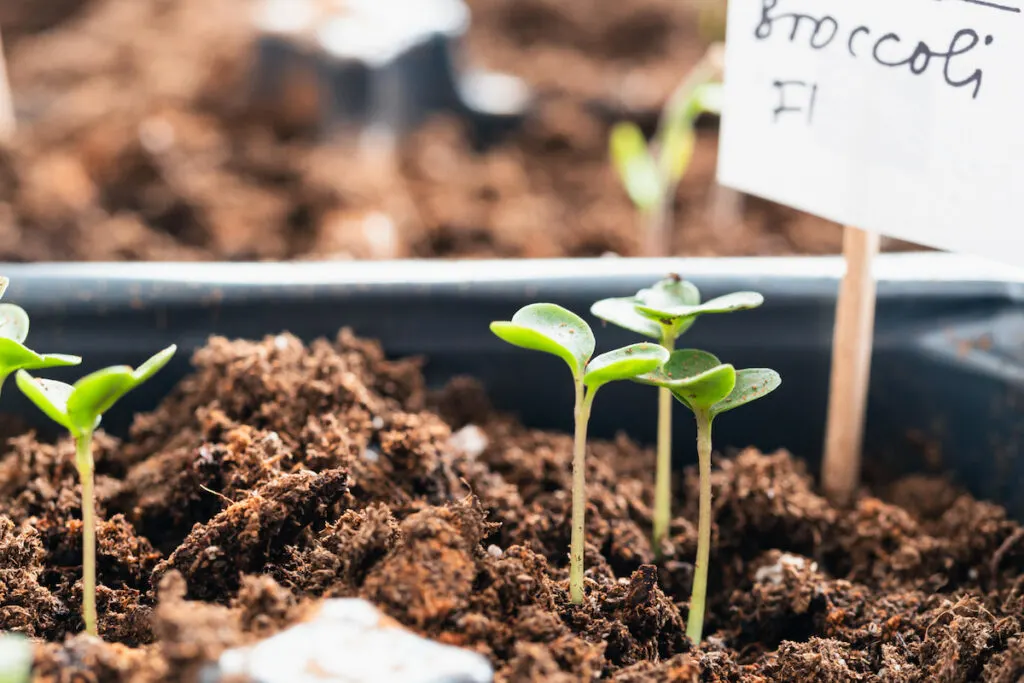
Starting indoors is essential in Zone 3 to extend the growing window.
Sow cold hardy plants, such as Brussels sprouts, kale, and broccoli, indoors early in the year, starting in March.
Some cold-hardy plants can go outside from mid-April, but you must harden them off first and protect them with covers.
Sow hot weather plants such as tomatoes and eggplants indoors around April and plant them outside once the first frost has passed.
You can sow fast-growing, warm-weather plants such as squash and melons a few weeks before the last frost, at the beginning of May. Or put them directly in the ground 1-2 weeks after the last frost.
Learn exactly when to sow your seeds in the month-by-month guide below.
Zone 3 Planting Calendar
The growing season is only four months long in Zone 3, but you can start sowing plants indoors in February.
You can put seedlings outside and sow directly in the ground from around mid-May and aim to have your final harvest by mid-September.
Planting in January

Planting in January is difficult in Zone 3 because there are still 16 weeks until the last frost.
January is an excellent time to organize growing supplies and prepare an indoor growing area.
Planting in February

The ground outside is frozen solid in Zone 3 in February, but it’s a fantastic month to sow cold-hardy seeds indoors.
Consider using a grow light when you start plants indoors during winter, especially if they don’t receive enough sunlight.
Keep seedlings in a warm, draft-free room and use heat mats, if necessary, to keep the soil warm.
Here are the best plants to start indoors in February:
| Vegetables | Herbs | Flowers | Fruits |
| Artichoke | Catnip | Daffodils | Alpine Strawberries |
| Asparagus | Lemongrass | Daisies | |
| Brussel Sprouts | Oregano | Echinacea | |
| Celery | Thyme | Honeysuckle | |
| Horseradish | Hydrangeas | ||
| Pansies | |||
| Petunias | |||
| Violas |
Planting in March

Temperatures begin to rise in March, but even though spring approaches, it’s still freezing outside, so you must germinate plants indoors.
Spring is the ideal time to sow flowers, and you can also germinate the following:
| Vegetables | Herbs | Flowers | Fruits |
| Broccoli | Basil | Anise hyssop | Apples |
| Cauliflower | Mustard | Begonias | Blackberries |
| Eggplant | Rosemary | Carnations | |
| Leeks | Chrysanthemum | ||
| Coneflowers | |||
| Crocuses | |||
| Geraniums | |||
| Hollyhock | |||
| Hyacinth | |||
| Irises | |||
| Jasmine | |||
| Lilies | |||
| Marigold | |||
| Salvias | |||
| Snapdragons |
Planting in April
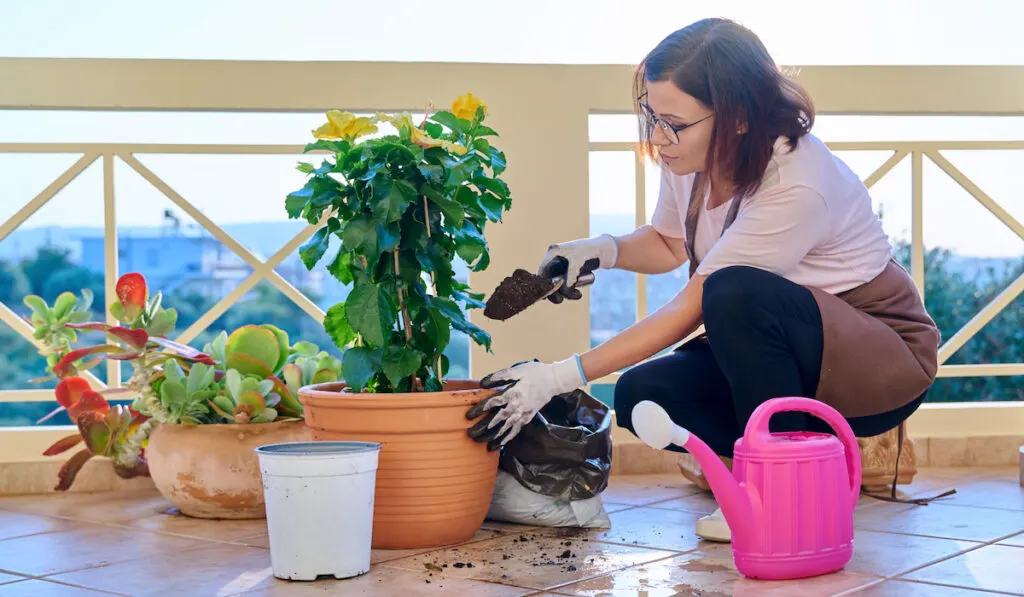
Many US grow zones are frost free in April, but in Zone 3, the ground is still hard, and temperatures remain below freezing.
April is the ideal time to start hot weather plants indoors, and you can also plant the following:
| Vegetables | Herbs | Flowers | Fruits |
| Bell Peppers | Marjoram | Astilbe | Watermelon |
| Cabbage | Stevia | Cannas | Cantaloupe |
| Endive | Coreopsis | ||
| Peas | Daylilies | ||
| Potatoes | Gladiolus | ||
| Tomatoes | Hibiscus | ||
| Impatiens | |||
| Mignonette | |||
| Sunflower | |||
| Sweet Alyssum |
Planting in May

May is an exciting month in Zone 3 when the last frost usually occurs. After it has passed, around the 15th, you can finally sow seeds outdoors.
May is the ideal time to put your indoor seedlings outside.
But harden them off before transplanting them.
It’s crucial to help plants acclimate, and to do this, put them outdoors in a sunny spot for a few hours each day. Gradually increase the time over two weeks.
Here are the plants you can sow outdoors in May after the last frost has passed:
| Vegetables | Herbs | Flowers | Fruits |
| Carrots | Mint | Centaurea | Blueberries |
| Parsnips | Parsley | Columbine | Grapes |
| Sweet Corn | Sage | Dahlias | Cold Hardy Kiwi |
| Winter Squash | Delphiniums | Haskap Berry | |
| Forget-Me-Not | Raspberry | ||
| Marigolds | |||
| Nasturtium | |||
| Phlox | |||
| Poppy | |||
| Tulips | |||
| Witch Hazel |
Planting in June
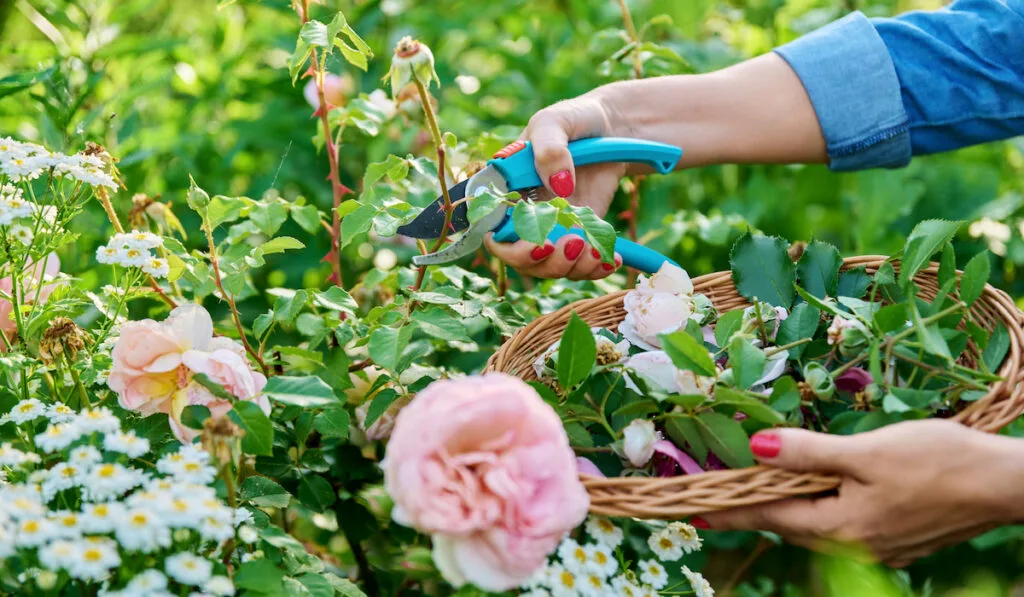
The last frost has passed in June, and temperatures rise—making it the optimum month for outdoor sowing.
Quick-growing seedlings can go outside in June, or you can sow seed directly into the ground.
Here are the things you can plant outside in June:
| Vegetables | Herbs | Flowers | Fruits |
| Cucumbers | Chervil | Anemone | Cherries |
| Pepper | Chives | Asters | Cranberries |
| Pumpkin | Dill | Bee Balm | Pears |
| Radish | Black Eyed Susans | Plums | |
| Rhubarb | Butterfly bush | Lingonberries | |
| Rutabaga | Cornflowers | ||
| Sweet Potatoes | Roses | ||
| Yarrow |
Planting in July
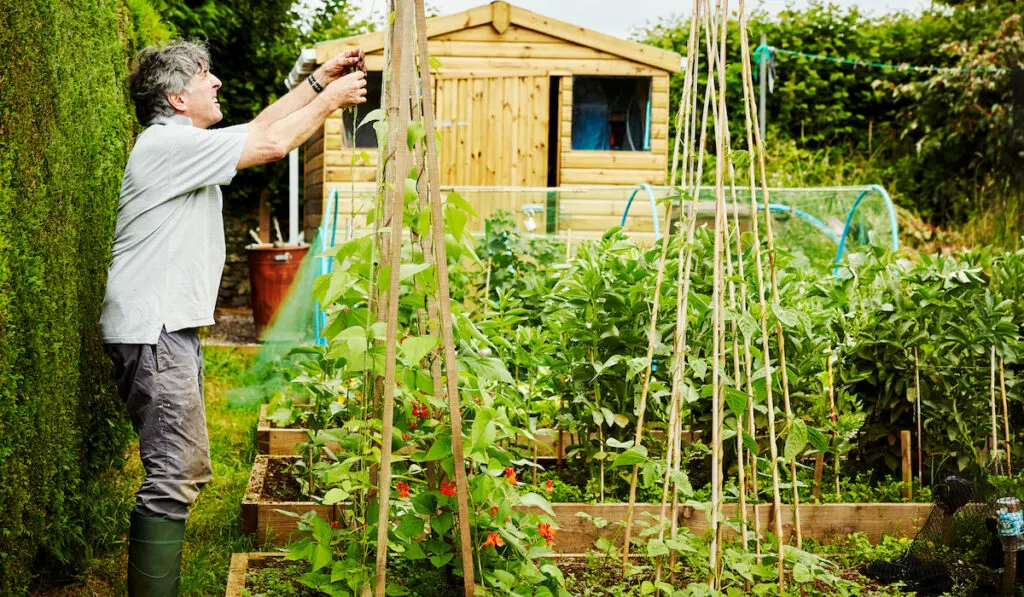
By July, the earth is warm, the days are long, and it’s the best time to plant the following:
| Vegetables | Herbs | Flowers | Fruits |
| Beans | Fenugreek | Borage | Goji Berries |
| Okra | Tarragon | Cannas | Gooseberries |
| Salad onions | Celosia | Peache trees | |
| Winter cabbage | Clematis | ||
| Gardenias | |||
| Morning glory |
Planting in August
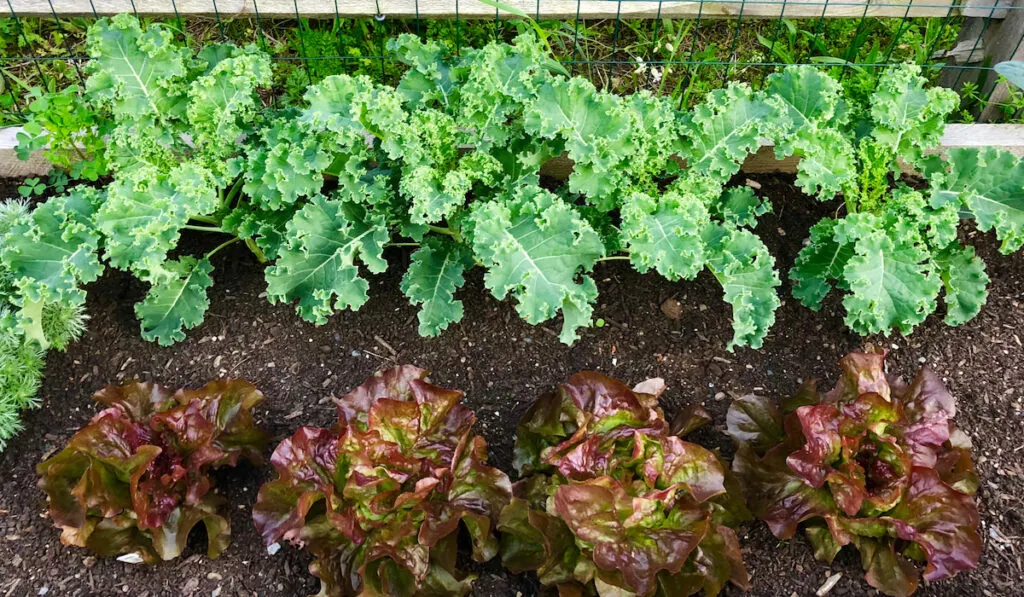
August is the last opportunity to plant quick-growing flowers, vegetables, and herbs before the days shorten and the first frost arrives.
Here are the things to plant in Zone 3 in August:
| Vegetables | Herbs | Flowers | Fruits |
| Chard | Coriander | Iris | Currants |
| Kale | Phlox | Elderberry | |
| Spinach | Sedum | Figs | |
| Turnip | Speedwell | ||
| Strawflowers | |||
| Verbenas | |||
| Zinnias |
Planting in September
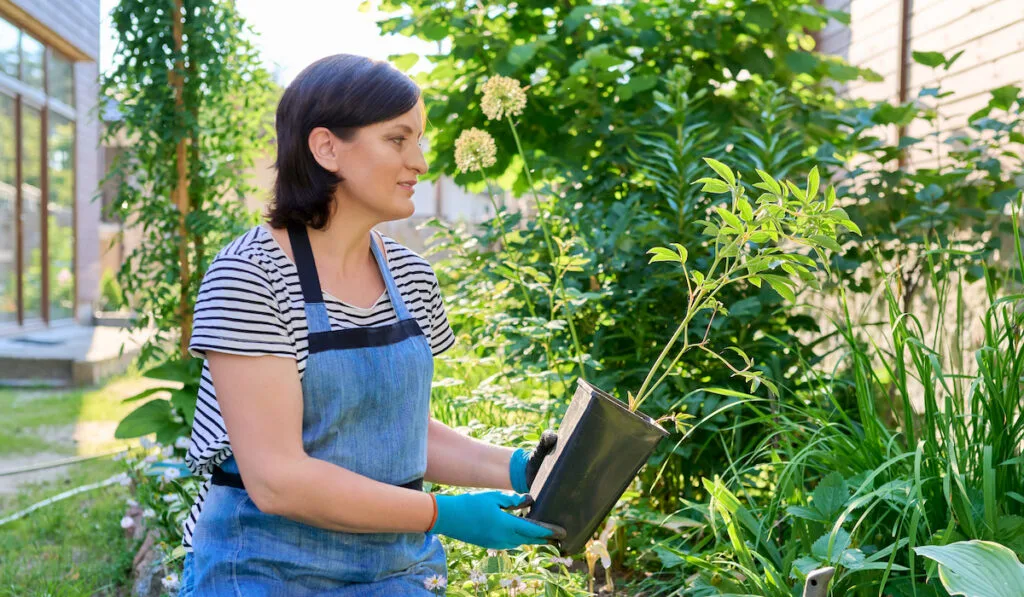
The first frost will arrive in September, so it’s time to prepare your garden for the winter.
September is the best month to plant winter flowers.
Aim to harvest the last of your plants before the middle of the month.
You can erect tunnels or floating row covers to extend your growing season by a few weeks in September.
Here are the things you can plant before the first frost:
| Vegetables | Herbs | Flowers | Fruits |
| Garlic | Chamomile | Baby’s breath | Gooseberries |
| Rocket | Lovage | Crocus | Nanking cherry |
| Dutchman’s Breeches | Plums | ||
| Glory of the snow | |||
| Peonies | |||
| Snowdrops |
Planting in October, November, and December

It’s hard to plant anything outside in Zone 3 in the winter. The ground is frozen and often covered in snow, and there is little natural light—less than 6 hours daily in the height of winter.
Use the cold months to prepare your garden for the coming season.
With such a short growing window, it’s crucial to have your garden ready as soon as summer arrives.
Here are the things you can do to prepare your garden for the spring:
- Make a plan for your garden
- Research and purchase seeds
- Purchase tools, compost, and containers
- Tend to your compost heap
- Prepare your growing area
Summary
The growing season in Zone 3 is incredibly short.
The first frost in Zone 3 is around mid-September, and the last frost is mid-May, so you must start seeds indoors to lengthen it.
Plant seeds according to the first and last frost date. A seed packet will tell you how many weeks to plant before or after these dates.
Invest in grow lights and heat mats to germinate plants indoors starting in February.
You can also use floating row covers or tunnels to extend your outdoor growing season by a few weeks in spring and autumn.
Resources:
- https://thegardeningdad.com/how-to-grow-glory-of-snow/
- https://harvesttotable.com/how-to-plant-grow-prune-and-harvest-gooseberries/
- https://harvesttotable.com/how-to-grow-cranberries/#Planting_cranberries
- https://harvesttotable.com/seed_starting_february_vegetab/
- https://www.gardeningknowhow.com/garden-how-to/gardening-by-zone/zone-3/zone-3-seed-starting.htm
- https://www.gardeningknowhow.com/garden-how-to/gardening-by-zone/zone-3/zone-3-vegetable-gardening.htm
- https://www.gardenersworld.com/plants/what-to-plant-july/
- https://www.thespruce.com/kiwi-vines-spring-foliage-2132895
- https://www.thespruce.com/taxonomy-of-dutchmans-breeches-2132950
- https://www.ruralsprout.com/herbs-start-january-february/
- https://northernnester.com/when-to-plant-rhubarb/
- https://www.finegardening.com/project-guides/fruits-and-vegetables/how-to-plant-blueberries
- https://www.ashridgetrees.co.uk/planting-in-cold-weather
- https://a-z-animals.com/blog/7-flowers-to-plant-in-march/
- https://www.homesandgardens.com/gardens/when-to-plant-peonies
- https://www.almanac.com/plant/currants
- https://www.sheknows.com/living/articles/997887/zone-3-planting-schedule/
- https://www.gardeningchannel.com/fast-growing-herbs-garden/
- https://www.highcountrygardens.com/flower-bulbs/crocus-flower-bulbs/planting-crocus-bulbs
- https://www.gardeningknowhow.com/garden-how-to/gardening-by-zone/zone-3/raspberries-in-zone-3.htm
- https://www.gardeningknowhow.com/garden-how-to/gardening-by-zone/zone-3/growing-grapes-in-zone-3.htm
- https://www.gardeningknowhow.com/garden-how-to/gardening-by-zone/zone-3/growing-herbs-in-zone-3.htm
- https://www.zone3vegetablegardening.com/post/growing-haskap-berries-alberta
- https://normsfarms.com/blogs/growing-and-harvesting-elderberry/growing-elderberry
- https://www.lovetoknow.com/home/garden/when-is-best-time-plant-roses
- https://www.countryliving.com/uk/homes-interiors/gardens/advice/a2507/how-to-grow-and-care-for-herbs-in-autumn/
- https://frostygarden.com/interior-alaska-seed-starting-schedule/#flowers
- https://www.allaboutgardening.com/when-to-plant-irises/
- https://www.masterclass.com/articles/how-to-plant-and-grow-lingonberries-in-your-garden#3JpS3NPJAU1qn9DnzC9HnE
- https://www.thespruce.com/growing-seeds-indoors-common-mistakes-847800
- https://www.thespruce.com/purple-leaf-sand-cherry-growing-profile-3269234
- https://www.gardeningknowhow.com/edible/vegetables/vgen/row-covers-for-garden-plants.htm
- https://www.almanac.com/plant/plums
- https://www.thespruce.com/witch-hazel-growing-guide-5191457
- https://itgrowsinalaska.community.uaf.edu/2020/10/08/stretch-your-growing-season-into-the-fall-with-season-extension-techniques-and-cold-hardy-vegetables/
- https://shiftingroots.com/hardy-fruits-grow-zone-2-3/
- https://shiftingroots.com/start-gladiolus-indoors/
- https://www.greenviewfertilizer.com/articles/snowdrops-these-little-flowers-don-t-care-if-it-s-still-winter/
- https://www.allaboutgardening.com/winter-blooming-flowers/
- https://extension.usu.edu/yardandgarden/research/nanking-cherry-in-the-garden
- https://www.thespruce.com/vegetables-and-salad-greens-to-plant-in-september-4767415
- https://www.almanac.com/plant/yarrow
- https://www.ufseeds.com/zone-3-planting-calendar.html
- https://www.brecks.com/category/zone3/a
- https://www.marysheirloomseeds.com/blogs/news/zone-3-vegetable-planting-guide
